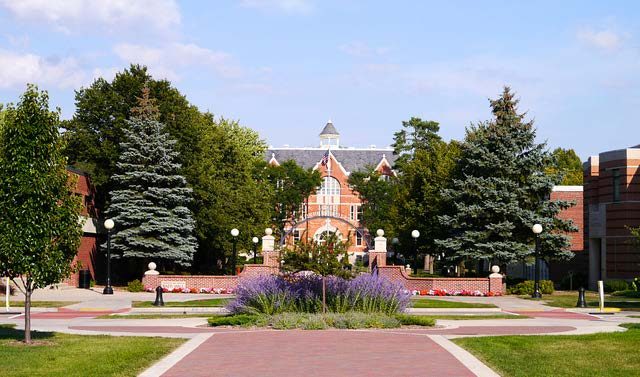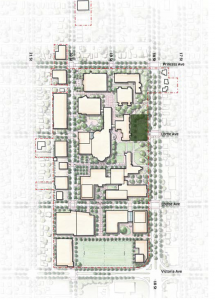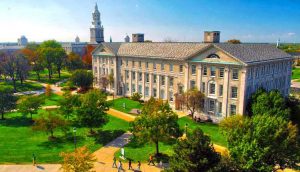Formal Front Plaza Forecourt

The formal front plaza represents the front forecourt for the original buildings. Though it was originally designed as a grand landscape and formal entrance into the Campus, it lost its stature and formality over time with the overgrowth of its surrounding tree canopies. The open space has also given way to the predominance of drop-off and parking as the primary function. In response, the Plan aims to restore this open space as the formal heritage front door to Brandon University. Design recommendations focus on celebrating this space and positioning it as a more usable, pedestrian-oriented urban plaza. The Plan considers this space to have opportunities for art and attractive garden-style landscaping as a draw into the Campus and to build its identity. It is envisioned to function as the formal heritage front door to the Campus.
Policies:
- Create a pedestrian-oriented plaza by reducing the size of the drop-off loop and integrating it as part of a continuous plaza landscape. The plaza space can be framed with smaller ornamental trees to provide beautification of the space and seasonal landscape colour and interest.
- Integrate one or two short-term handicap parking spaces for drop-off and pick-up close to the building.
- The trees should frame and not hide the Clark Hall building. Opportunities to open up the canopy should be considered by selective removal of trees fronting Clark Hall only.
- All trees including existing evergreens should be limbed up to provide a minimum 6-8 foot clearance underneath the tree canopy.
-
Pathways into the plaza space should align and connect with the crosswalks at Lorne Avenue for ease of access and clear wayfinding into the Campus.
- The plaza should provide a balance of soft and hard surfaces to accommodate a high degree of pedestrian circulation, as well as grassed areas for sitting, and garden areas for landscape beautification.
- The plaza should be a prime location for highlighting Indigenous peoples’ culture, through art, landscape design, and the location of structures such as a tipi.


